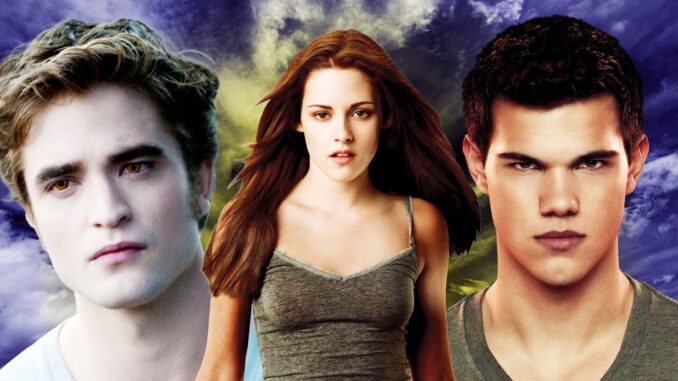
Shocking Twilight Saga Facts That Still Impress Fans Today
The Twilight Saga, a cultural phenomenon that once gripped the imaginations of millions, remains a curious and enduring fixture in the pop culture landscape. Dismissed by some, passionately defended by others, its legacy is undeniable. Yet, beneath the surface of sparkling skin, brooding gazes, and earnest declarations of love, lies a collection of behind-the-scenes facts that, even years later, continue to surprise and impress its dedicated fanbase. These aren't just pieces of trivia; they are revelations that deepen our understanding of the saga's serendipitous alchemy, the dedication of its creators, and the often-unpredictable path to iconic status.
Perhaps the most legendary "what if" in the Twilight universe revolves around the casting of its central vampire, Edward Cullen. Long before Robert Pattinson donned the character's signature pale makeup and bronze hair, author Stephenie Meyer had a clear vision for her literary heartthrob: Henry Cavill. Imagine, for a moment, the Man of Steel as the tormented, immortal teenager. This tidbit, widely known yet perpetually fascinating, underscores the transformative power of casting. While Cavill, at 24, was deemed too old by the time the film was greenlit, the notion that the Edward we know and love could have been an entirely different, perhaps more conventionally heroic, figure is genuinely startling. It highlights the delicate balance between authorial intent and cinematic execution, and how the "right" actor, found almost by chance, can fundamentally shape a character into something globally recognized and adored, forever cementing Pattinson's unique, slightly awkward charisma as the definitive Edward.
Adding another layer of compelling irony to Pattinson's portrayal is the widely circulated, and often hilariously delivered, fact that the actor himself famously disliked Edward Cullen. Pattinson frequently expressed his disdain for the character's brooding intensity and dramatic tendencies, sometimes even mocking the role that launched him into superstardom. This isn't just actor-character friction; it's the ironic brilliance of an actor so committed to his craft that he could embody a role he personally found alienating, infusing it with an almost palpable sense of melancholic ennui that perfectly suited Edward's ancient, burdened soul. Fans are impressed not by his dislike, but by the sheer professionalism and interpretive depth he brought to a character he didn't personally connect with, transforming his internal skepticism into an outward performance that resonated with millions. It makes his portrayal feel more human, more nuanced, and ultimately, more impressive given the personal distance he maintained.
Then there's the gripping tale of Taylor Lautner's battle to retain his role as Jacob Black. After the first film, the filmmakers believed Lautner, then a slender teenager, wouldn't be able to convincingly portray the physically transformed, much larger werewolf Jacob in New Moon. The search for a new actor began, sending ripples of anxiety through the nascent fandom. Lautner, however, refused to be replaced. What followed was a disciplined, almost superhuman commitment to physical transformation, as he packed on over 30 pounds of muscle in a remarkably short period. This wasn't just a professional obligation; it was a testament to his dogged determination and his emotional connection to the character. Fans were, and still are, awestruck by this level of dedication. It humanized the intense rivalry between Team Edward and Team Jacob, making Lautner's physical growth a tangible representation of Jacob's evolving strength and loyalty, solidifying his indispensable place in the saga.
Beyond individual performances, the very speed at which Twilight became a global phenomenon and churned out its sequels is a testament to an industry scrambling to keep up with unprecedented demand. The first film, a modest production, exploded into a cultural juggernaut, leading to a rapid-fire release schedule for its successors. This often meant tight deadlines, intense filming schedules, and immense pressure on cast and crew. The fact that the entire saga, from Twilight to Breaking Dawn – Part 2, was released in just five years, maintaining a consistent narrative and escalating production values, is a remarkable feat. It speaks to the passionate dedication of everyone involved, from the actors to the grips, who labored to bring this beloved world to life for an insatiable fanbase. This breakneck pace, coupled with the saga's seemingly effortless global domination, continues to impress those who understand the mechanics of large-scale film production.
In retrospect, these "shocking" facts aren't mere trivia; they are crucial threads in the rich tapestry of the Twilight Saga's legacy. They reveal the surprising turns of fate that shaped its iconic characters, the profound dedication of the actors who embodied them, and the sheer force of will that transformed a series of young adult novels into a cinematic empire. Years after the final credits rolled, these revelations continue to impress fans, adding layers of appreciation to a saga that, for better or worse, undeniably left its shimmering, indelible mark on popular culture. They remind us that behind every phenomenon, there's often a fascinating story far more complex than the one presented on screen.
